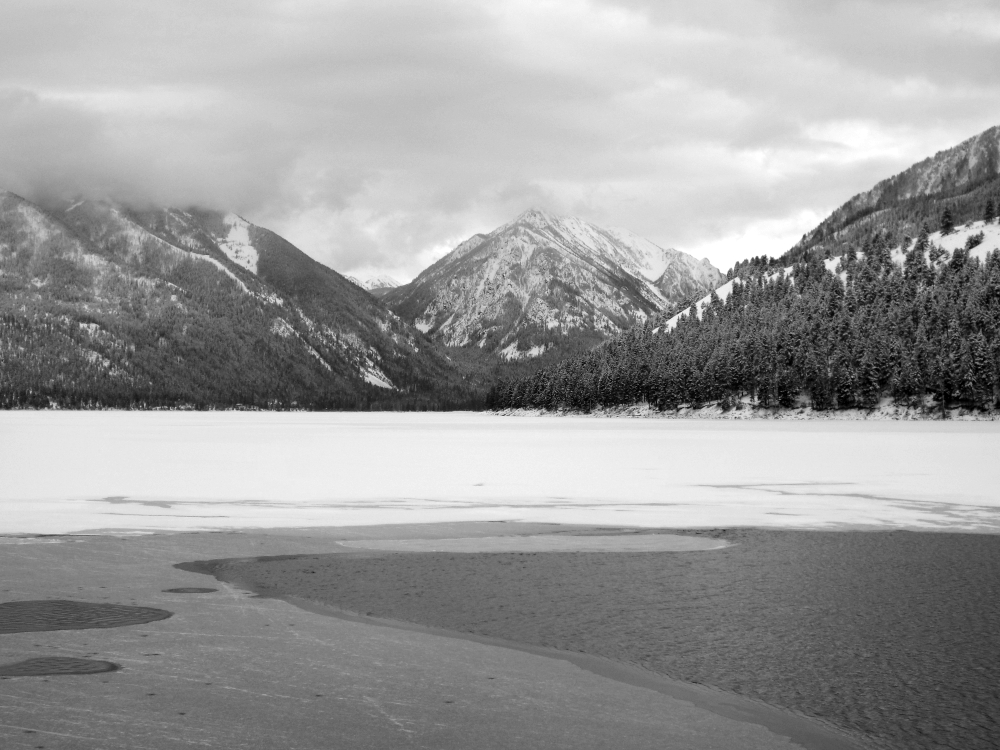The fact that Le Guin goes from this pulp fiction, science fiction, adventure tale on a fantasy planet to The Left Hand of Darkness in three years of publishing staggers me. The amount of work put into her writing impresses. But, come on, let’s talk about this book alone before the context.
Here, in her first published novel, Le Guin writes a science fiction adventure tale on a fantasy planet. The plot is simple: a beautiful native woman receives the curiosity of a lightyears distant scientist (Rocannon) when she shows up demanding an artifact from his museum as her cultural heritage, he then finds the research on her planet and people woefully under-cooked, he travels there to research with a team, then they’re ambushed by an interstellar rebellion and he has to hero’s quest his way through legends and myths of the world to find his unsuspecting enemy and get revenge, acceptance, a place in the world. Look, the plot rests on the tired standard of heroes questing, but she doesn’t muddle her language the way CJ Cherryh did with her slightly similar first-novel, Gate of Ivrel. Le Guin’s writing is clear and effective, but never anything spectacular.
"What I feel..." Rocannon began.
"Well?" Ketho inquired hoarsely, after a long pause.
"What I feel sometimes is that I ... meeting these people from worlds we know so little of, you know, sometimes ... that I have as it were blundered through the corner of a legend, of a tragic myth, maybe, which I do not understand."
Structurally, the book takes a turn after that initial noblewoman goes crazy and runs off into the woods from the lightyear time dilation. This shift is followed by Rocannon’s arrival, the revolutionaries' ambush, and the hero’s quest storyline. This shift almost works, because that noblewoman’s quest for the necklace was also a hero’s quest of a sort, and because Rocannon’s companions are all descendants of that woman, but the split in the narratives is still somewhat jarring. From research after I finished reading, it seems that first part was initially published as a short story, so I guess this is a bit of a fixup novel. But Le Guin takes pains to tie the two parts together through similar characters and themes, so it almost works.
Not all roads that lead down lead up as well.
On its own, the book is an entertaining page turner. Two moments stand out as unexpectedly saving the hero without being foreshadowed—deus ex machina in the escape from the flying people’s city and in gaining telepathy; though the latter is somewhat foreshadowed, sort of, I guess. But it’s a good adventure tale despite these two moments. Except that the pacing is slower and I like adventure tales with faster pacing, I would put this up there with other pulp fiction I like. If you’re feeling like pulp fiction, you can do much worse than this book.
"Take cover!" but could not move himself. The helicopter nosed in unsteadily, rags of cloud catching in its whirring vanes. Even as he watched it approach, Rocannon watched from inside it, not knowing what he looked for, seeing two small figures on the mountainside, afraid, afraid—a flash of light, a hot shock of pain, pain in his own flesh, intolerable. The mind-contact was broken, blown clean away. He was himself, standing on the ledge pressing his right hand against his chest and gasping, seeing the helicopter creep still closer, its vanes whirring with a dry loud rattle, its laser-mounted nose pointing at him.
But I know Le Guin’s strengths later in life are character development, deep exploration of themes without losing the book’s entertainment level, and solid wordbuilding that leaves the reader wanting more. So let me examine those strengths now. First, character development. Rocannon himself is well-realized, as is Mogien, though the latter is more a foil that helps her explain her world. This companion-character-as-worldbuilder technique functions well within this novel, but the focus is clearly on Rocannon. So, what can I remember about Rocannon? He’s compassionate, intelligent, and determined. He tirelessly works to help those around him, even when they don’t realize he is helping them. He isn’t looking for reward, but the self-satisfaction of helping others. Le Guin shows this through Rocannon’s actions, words, and interior monologues, helping cement him in the reader’s mind as a guy to be friends with, both when he is powerful and after the ambush leaves him dependent. It's Le Guin showing, not telling. The only critique that I have here is that she took a while to build his character. Instead of changing Rocannon constantly through the novel, he doesn’t change much, just the reader’s understanding of him changes. Some of his terrible experiences, like being burned alive at the stake for three days and surviving, are forgotten as they alter him not at all, while he seems to have come to this world with everything he needed to save it already present in his personality. This unfortunate writing choice is something Le Guin improves on later, but at least here she has a well-founded, complex character to start from here, even if it takes her the whole book to build that character.
He had intended to add, "Give me a couple of hours to get clear," but did not. If he were caught as he left, the Faradayans would be warned and might move out the FTLs.
Second, the depth of exploration and variety of viewpoints of Le Guin’s themes are legendary in her later writing and storytelling. Here the themes touch on death, cultures, races, and working together. There are few deeper themes or philosophical ideas, and little in the way of exploration, but Le Guin points out some questions that are fascinating. One is lightyears. As the time dilation allows the initial noblewoman to outlive her husband, and is completely out of her conception, this realization drives her crazy. This isn’t so much explored as noticed and brought up. It’s an interesting take on time dilation, but not terribly so. The second is communication: instantaneous communication across lightyears is possible, so is telepathy. But she really just brings these ideas up without delving into them deeply. So, in terms of her later tendency to explore themes deeply from different angles, here she just mentions themes from one or two angles, and doesn’t really explore their implications or how those themes would change characters. But they’re interesting themes examined from an interesting angle, even if it isn’t explored deeply and that angle is really just one angle. It’s a good start, yet not up to the par of her later works.
"How far a journey, Lord?"
His lips drew back and back. "A very far journey, Lady. Yet it will last only one long night."
Third, Le Guin’s strong worldbuilding shows up here through her tactic of involving off-scene developments, or an unexplored broader context, that influences the characters and story. For example, there is an explosion (the ambush), and Rocannon’s response (after mourning his friends) plays out in interior monologue, where he reflects that the revolution that had been brewing when he left civilization for this backwater world must have begun.
—This hint, this taste of a broader context can do two things. First, if it’s not followed up, it can easily feel like post-action explanation (ex post facto), which tends to feel cheap to the reader. You know, you spend a hundred pages reading the murder mystery, you get to the end, and it turns out the killer was really off-screen the whole time and there was no way you could have guessed who it was. It’s a let down. Second, if it’s followed up on well, this reflection can help build the world, and help the initial event achieve more surprise. Le Guin accomplishes this here: tracking down these rebels and destroying their presence on this world becomes the hero’s quest, the rest of the book. In other words, rather than explaining the event afterwards and then dropping it, Le Guin explains the event afterwards and then builds on it. Even helpful Rocannon becomes revenge oriented.
—One thing Le Guin consistently does in her later books and here in her first book, is to build the world—by which I mean her universe—through these aspects, through these glimpses that change people’s lives, that are built off of, that could so easily be asides but end up being key to the story and the characters. This is solid worldbuilding for Le Guin, and it was exciting for me to see her already good at that in her first novel. Not great at it, but good at it already.
They can send death at once, but life is slower.
In all, this is a fine first novel. I’m impressed with how somebody who wrote this could later write something as great as The Dispossessed, and my conclusion is that in order to break the rules, you need to first show you understand the rules. Now, I’m not one for rules of writing, but Le Guin here shows that she can write a page-turning novel comfortably, then later allows herself to experiment and try new things while still being based on that strong foundation. It’s a good trajectory that encourages me as a young author. In all, this novel is a good read, but I probably will not go back to it due to the shallowness of the themes, the lack of change in the main character, and, frankly, the quality difference between this and her later works.
The prisoner is the jailer's jailer.







No comments:
Post a Comment